From prehistoric sea to WWII bombing to wildlife refuge, dig into Oklahoma's salt plains
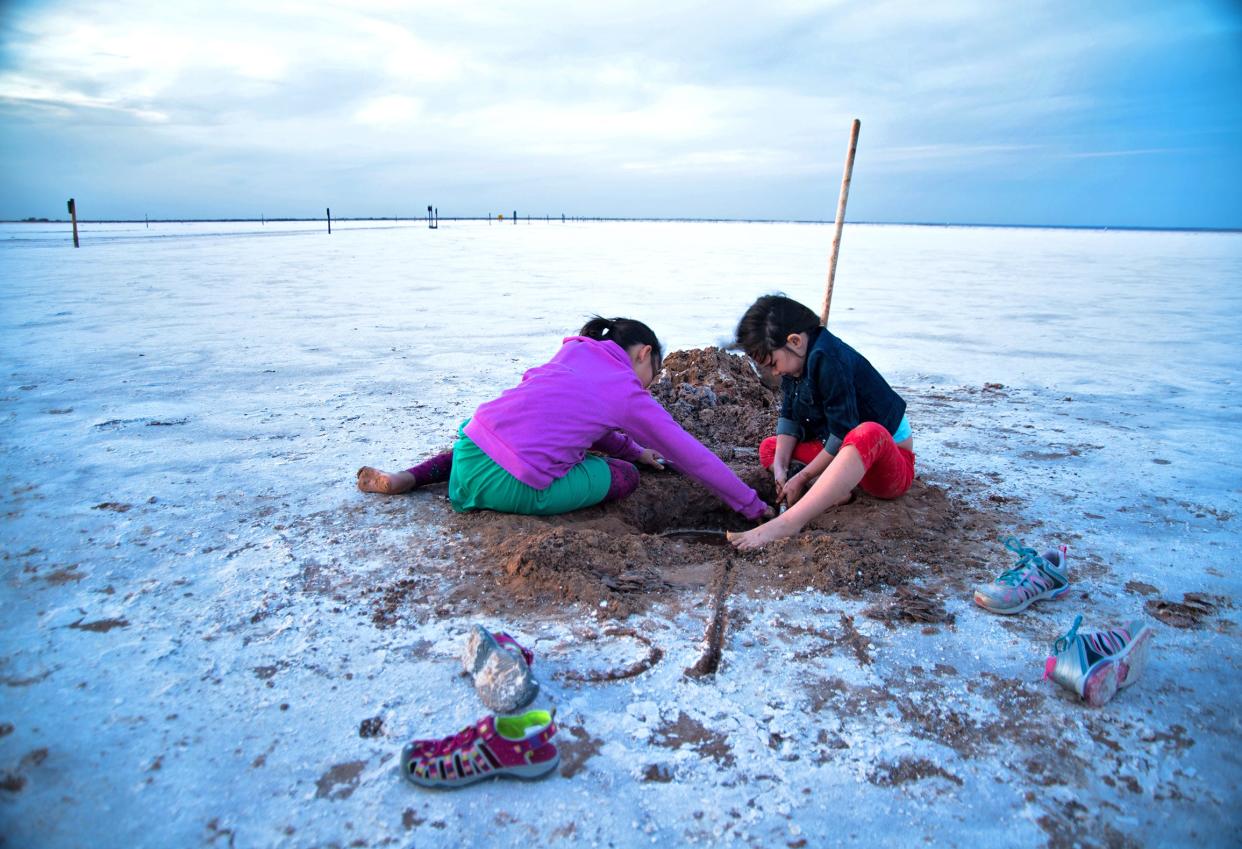
From April to October each year, visitors set out across Oklahoma's iconic salt flats to dig up unique crystals found nowhere else in the world.
Located in north-central Oklahoma, Salt Plains National Wildlife Refuge is a 32,197-acre refuge made up of a variety of habitats such as wetlands, prairie and more than 11,000 acres of salt flats. Visitors come from all over to hunt, fish, birdwatch, hike and crystal dig. The salt flats are the only place in the world where you can dig for hourglass selenite crystals.
From prehistoric sea to tribal treaties
Shelley Zumwalt, executive director of Oklahoma tourism and recreation, said the Great Salt Plains were created millions of years ago by the repeated flooding of a prehistoric sea that once covered Oklahoma. When the ocean receded, it left behind a crust of salt.
Evan Monnett, U.S. Fish and Wildlife public affairs specialist, said the area was originally part of the Osage Nation and was known not only as a source of salt but also as a prime hunting area for bison around the Salt Fork of the Arkansas River.
After Native American tribes were forcibly relocated to Oklahoma on the Trail of Tears between 1830 and 1850, the area was designated as part of the Cherokee Outlet. That was a 60-mile-wide parcel of land south of the Oklahoma-Kansas border, and was not a part of any tribal boundary. The Treaty of New Echota signed in 1835 gave rights from the Osage Nation to the Cherokee Nation with caveats that everyone had rights to use the salt flats under the United States government.
During this time settlers began ranching and farming the area, and the salt flats became a source of salt for them. After statehood, the area eventually was sold during a land run with proceeds going to the Cherokee Nation.
The salt flats make up one-third of Salt Plains National Wildlife Refuge, which was officially established on March 26, 1930, to protect nesting and migratory birds and their habitats. It is a partial overlay on a U.S. Army Corps of Engineers project that created the Great Salt Plains Reservoir, which was completed in 1938.
More: Salt Plains Lake Wildlife Refuge to re-open crystal digging area on April 1
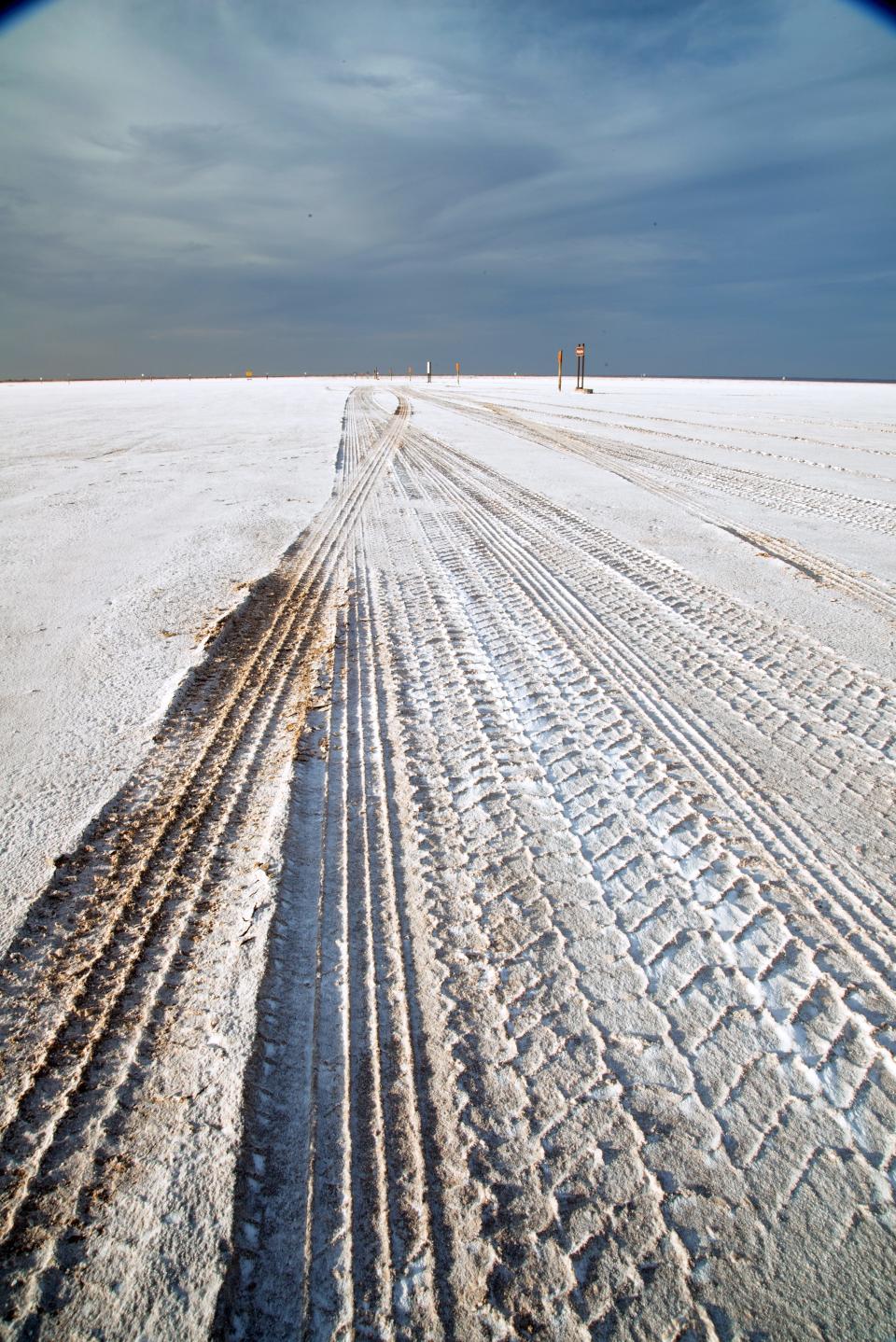
Salt Plains National Wildlife Refuge is 'dedicated to conservation'
The salt flats may appear barren, but they provide an important nesting and feeding habitat for many bird species. Thousands of sandhill cranes, ducks, shorebirds and endangered whooping cranes make their home in the salt plains.
Melissa Robell, visitor services specialist for the Salt Plains National Wildlife Refuge, said about 120,000 people visit the refuge every year, with 100,000 people visiting to dig for selenite crystals.
The refuge encourages people to dig for crystals because it is beneficial for maintaining the environment. Dig sites made by selenite hunters create space for natural wildlife. They provide room for the hundreds of thousands of migrating shorebirds that nest at the Salt Plains.
The refuge is designated a Globally Important Bird Area by the American Bird Conservancy, and a site of International Importance within the Western Hemispheric Shorebird Reserve Network. It is also critical habitat for the endangered whooping crane.
When the refuge was first established in the 1930s, Congress passed a number of acts to protect migratory birds, whose populations had been decimated in recent years for sport and fashion.
In the present day, Salt Plains National Wildlife Refuge is still dedicated to the conservation of the area for birds and other species.
“We are focusing on restoring native prairie and removing invasive species and controlling them with prescribed fires," said Shane Kasson, Salt Plains National Wildlife Refuge refuge manager. "Providing quality wetland habitat for migratory birds is also very important.”
Ralstin Island located at the center of the refuge’s Great Salt Plains Lake is one of the largest rookeries in Oklahoma. During spring, egrets, herons, ibis, cormorants and other birds build nests on the island rookery, and by early summer, their young began to hatch. The island hosts about 30,000 birds annually.
To protect these birds and other species, crystal digging is only open to the public for half of the year.
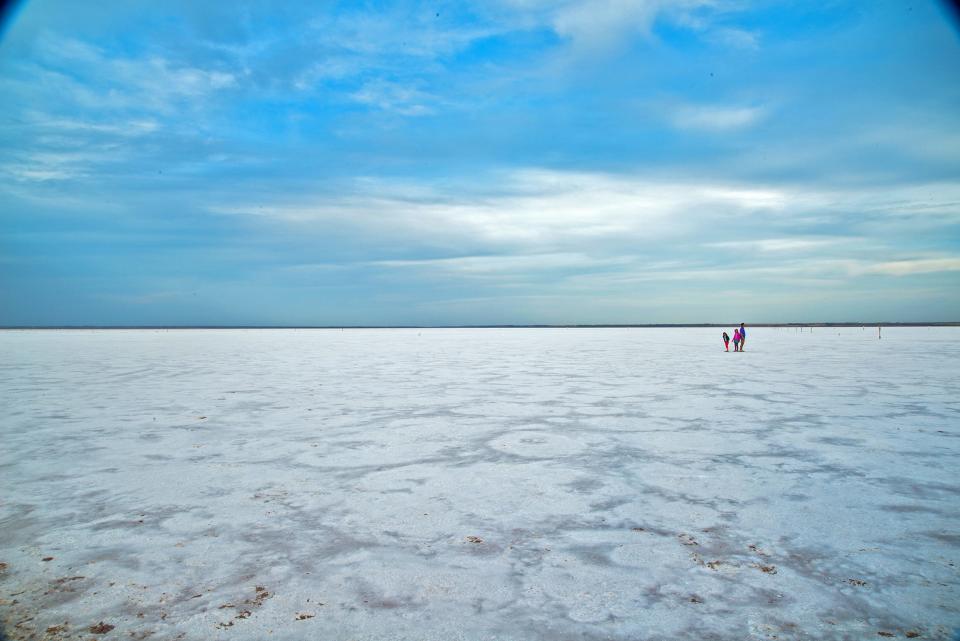
From bird sanctuary to bombing range
During World War II, the United States Army Air Corps used the salt flats as a practice bombing and gunnery range. From 1942 to 1946, this defense training site was known as the Great Salt Plains Bombing Range.
Bombers were sent from Oklahoma City; Enid; Pratt, Kansas; Dodge City, Kansas; and Army bases for target practice.
In 2007, a Boy Scout digging for crystals in the area found a chemical vial filled with decades-old mustard gas. The vials had been used during World War II to train troops to recognize chemical agents.
The Army Corps of Engineers spent two years inspecting the area, recovering 171 vials before sounding the all-clear. These vials were removed, and studies have been completed to locate any other military vials or munitions.
Zumwalt said the park is completely safe for people to visit, and they have no concerns.
What's so special about these crystals?
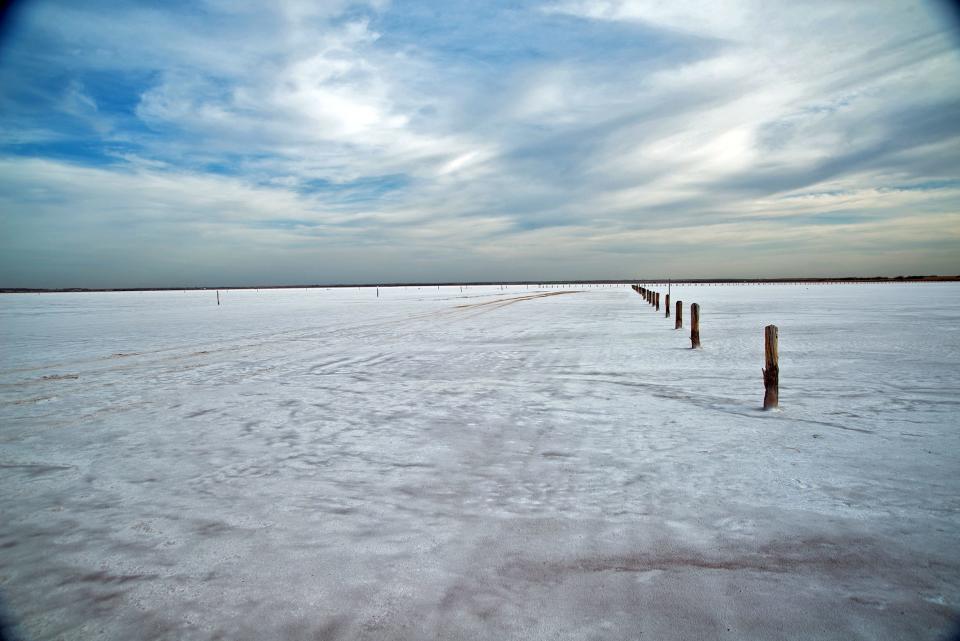
Selenite crystals are common around the world, but crystals with hourglass-shaped inclusions are unique to Salt Plains National Wildlife Refuge.
Selenite is a type of gypsum, a hydrous calcium sulfate, which is formed when calcium and sulfate-rich alkaline waters evaporate away. Selenite crystals not only need selenite, but gypsum and the right environmental conditions, to form. The dark brown color is from iron oxide. These crystals can be found in single pieces called blades or clusters, with multiple blades together.
Monnett said the interactions between the salt in the area and other materials, like sand, clay, sticks, rocks and bones, create opaque hourglass-shape sand inclusions in the otherwise transparent chocolate-brown crystals.
These unique hourglass-shape inclusions in the selenite crystals have attracted selenite hunters from all over the world to add these special crystals to their collections.
Something for the whole family
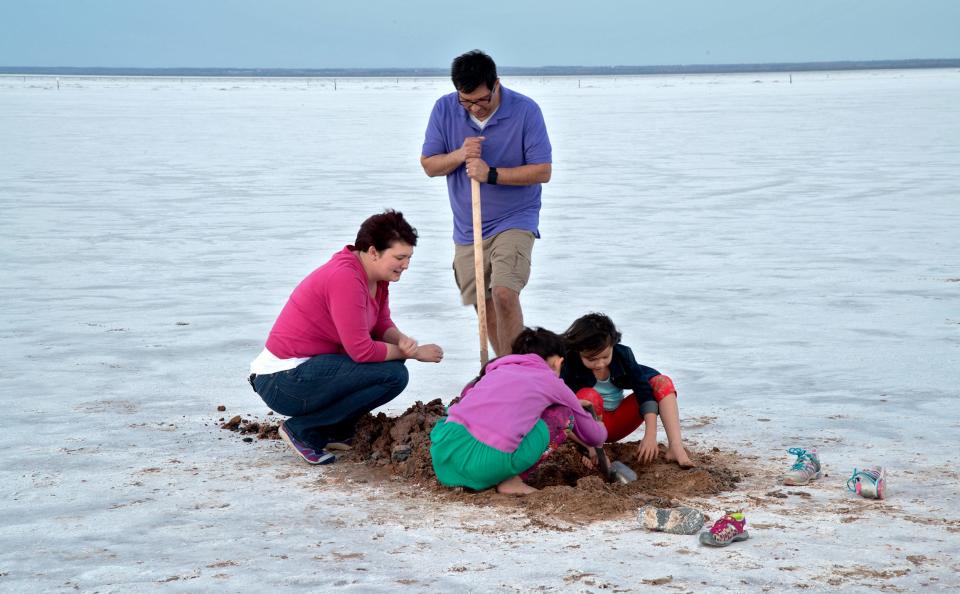
Salt Plains National Wildlife Refuge's appeal is that there is something for all ages and all types of adventurers.
"We want to make sure everybody knows all the diversity that we have," Zumwalt said. "It really makes the refuge a place where you show up and have a great day."
Looking to the future, Zumwalt wants to continue to promote crystal digging and expand the activities available at the park by bringing in small vendors.
"We will continue to provide quality experiences to visitors while protecting the environment for the wildlife," Zumwalt said. "We are really making sure that Oklahoma is one of those destinations that people want to visit."

This article originally appeared on Oklahoman: Dig into Oklahoma's salt plains, from WWII bombs to wildlife refuge

